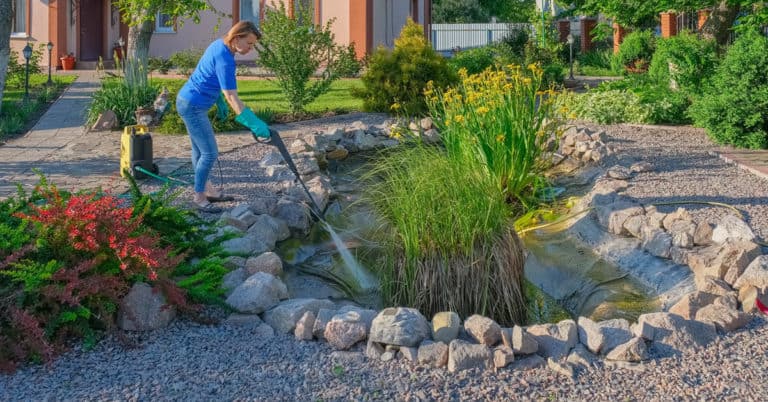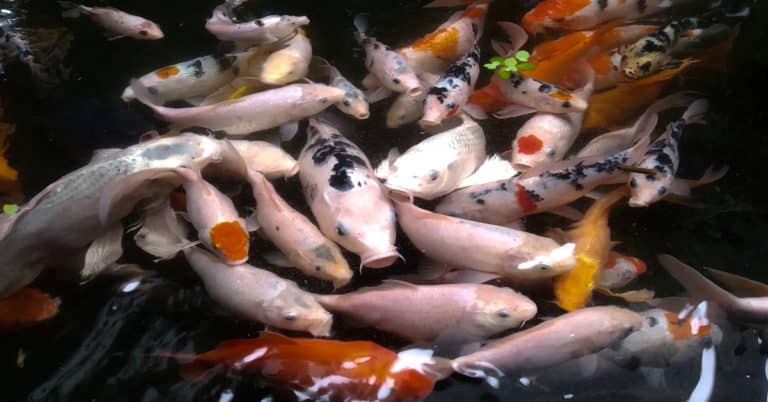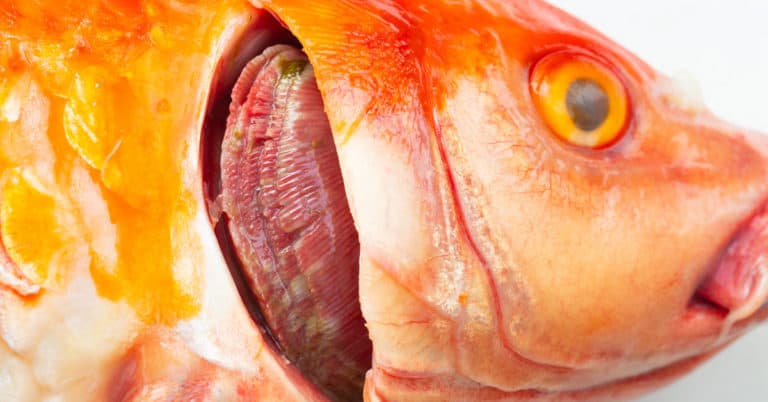Have you noticed stringy green weeds almost as thin as hairs in your koi pond? That’s string algae, and it’s a significant problem. If you let your string algae growth get too bad, your koi may be in trouble. That is because of how string algae sucks up oxygen from the water. It’s time to help your koi companions by banishing this oxygen-sucking weed in exchange for clear water. It is imperative to control algae buildup.

After installing it on my property, I had a string algae issue in my koi pond the first summer. Fortunately, I quickly found information on how to get rid of string algae and control it right away. Let’s go over the options here. We’ll discuss:
String algae is a filamentous plant species. It’s stringy in appearance, with strands of fibrous green material that can look like green strands of hair, and these algae will quickly take hold and grow in most kinds of ponds. Places in a pond where you might see it growing include the surface of the water and rocks.
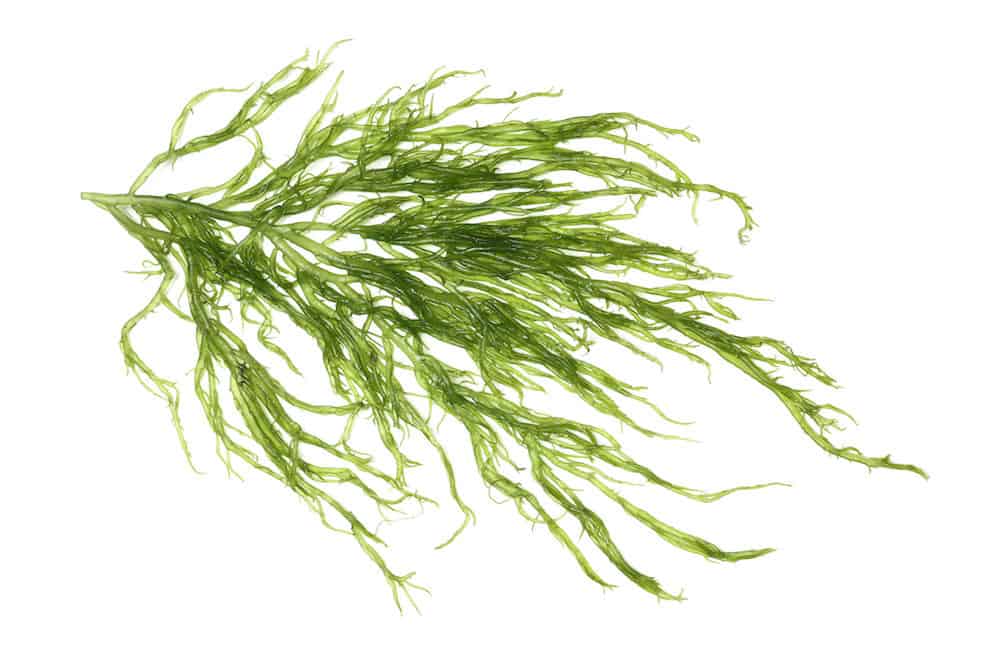
This is a fast-growing plant, and if it’s left too long, you’ll end up with large mats and blankets of string algae in your pond. You may have heard other pond owners call string algae hair algae or blanket weed. Some people just call it pond scrum or pond debris. You may see string algae attached to areas such as waterfalls, liners, and rocks.
While it usually stays deeper down in the water, a blanket of string algae may sometimes rise to the surface of your pond. This happens when bubbles get trapped inside of the fibers. As a result, the weeds rise to the top.
If you want to be a pond owner, be prepared to deal with string algae. This type of algae tends to become a problem in the warmth of the summer. This algae becomes a worrying issue quickly, and it adversely affects your koi pond because of how it removes oxygen from the water. It sucks up oxygen that your koi need.
There are certain water conditions that encourage string algae to grow and become a nuisance and potential hazard to your koi. These include:
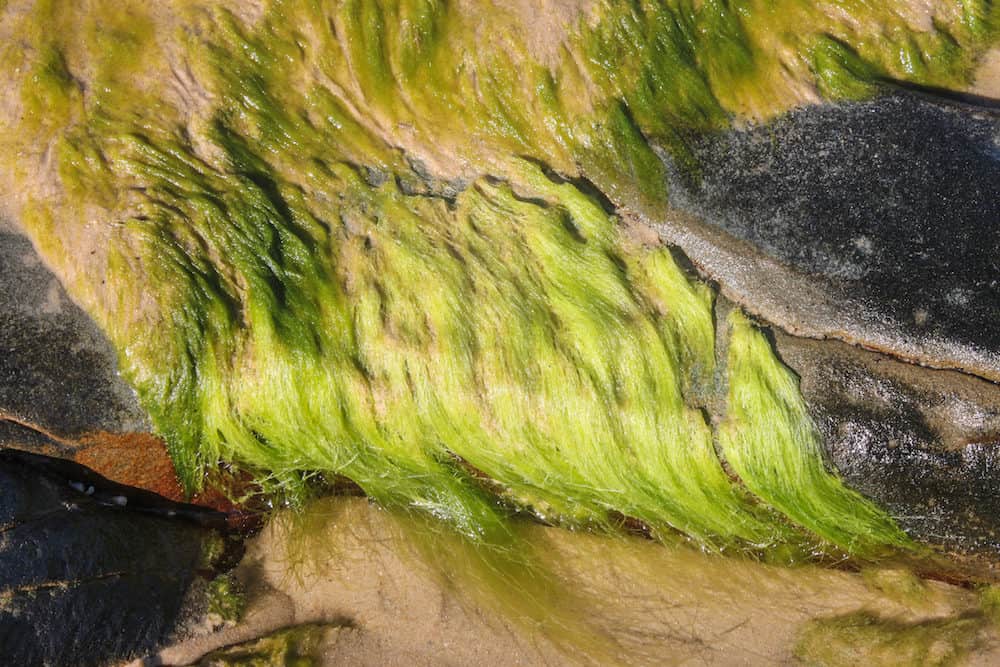
String algae are more likely to grow if your pond’s water is too low in beneficial bacteria which is necessary for a healthy pond.
If debris and fish waste is left to break down in your pond, this will make it easier for string algae to grow. The breakdown of debris, fish food, and plant material will lead to too many heavy nutrients. There may also be too many heavy nutrients in the water because of fertilizer runoff from any areas around your pond.
String algae need warmer water in order to grow. That is why it creates problems in the summer months.
Algae species, including string algae, tend to grow when there is an increase in the amount of phosphorus and the pH of your pond water.
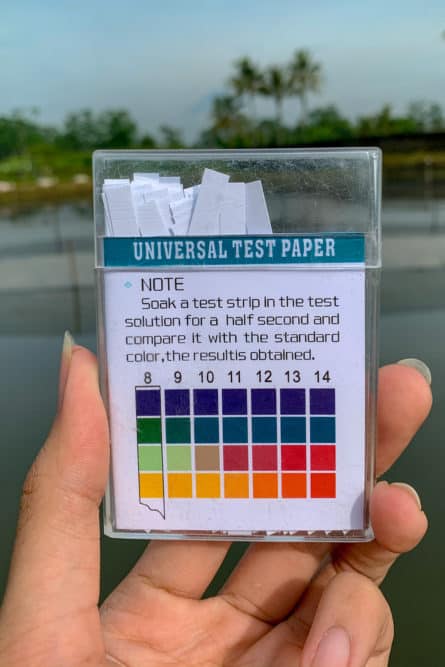
Anything that feeds and fuels string algae will make it worse. Some of the things that will encourage string algae growth include low levels of oxygen in the water and waste products (including phosphorus and nitrogen coming from decaying matter). Unfortunately, sunlight also helps string algae, making it difficult to get under control.
Monitor the level of nitrates and nitrites in your pond water. If the concentrations of these are too high, string algae are more likely to grow heavily. You can test nitrate and nitrite levels with a specialized testing kit. Also, make sure phosphates from fertilizer runoff aren't getting into your koi pond.
If your pond water doesn’t have enough dissolved oxygen, string algae are likely to get out of control. String algae feed on oxygen, so at first, it will start to die. However, as some of it dies and starts to decay, a vicious cycle starts. Why? It’s because the waste products from the dead algae will make more algae grow. Also, remember that low oxygen levels will hurt your koi.
Having too many fish in your pond will also make a string algae problem more likely to happen. That is because of excessive amounts of waste from the fish. Even if you have an excellent filtration program (and you should), too many fish will be too much for it to handle.
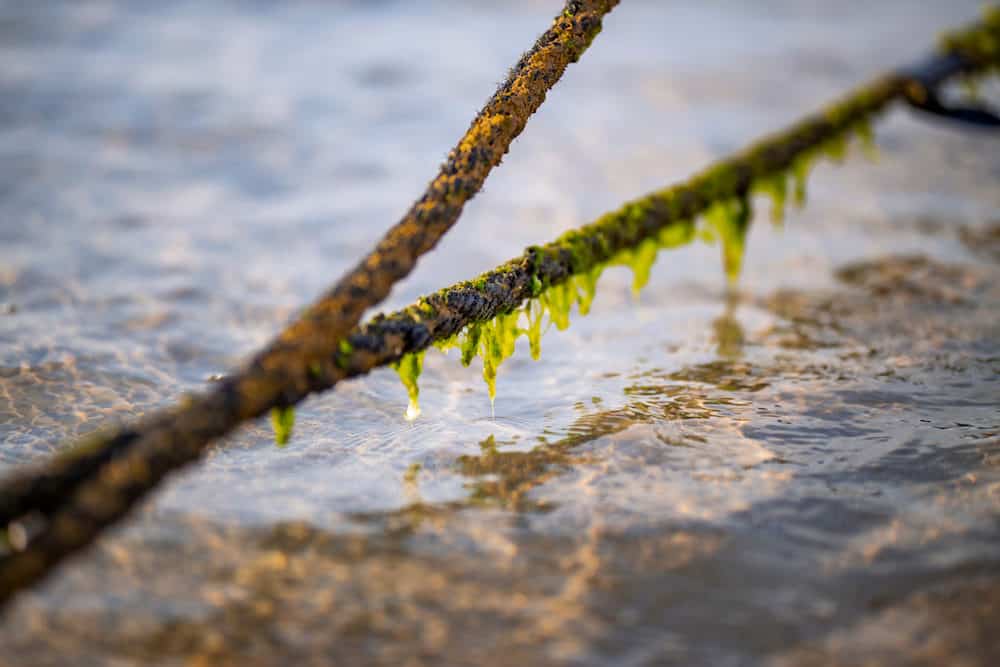
You can use several different methods to help get rid of string algae in your koi pond. No matter which method or methods you choose, you should begin by physically pulling out the string algae as much as you possibly can. Many koi pond owners will use more than one method. If you purchase a product for getting rid of algae, carefully read the instructions that come on the bag or package.
It’s important to physically remove as much of the algae material as you can before you treat your pool, as you want to cut down on how much algae will die and end up decaying in the water. If you have trouble pulling out the string algae with your hands, use a long-handled brush. With this kind of brush, you simply put the brush amongst the weeds and turn it in circles so that the algae gets wrapped on it. Then pull out the brush and dispose of the algae.
After you’ve done that, you can use one or more of the methods we talked about before.
I'm not going to lie - the algae battle is real, never-ending, and gross. If you'd rather outsource algae control (and other maintenance), you can find a local company to do it. For more information, check out our koi pond maintenance service providers page.
A popular way to control the amount of string algae in a pond is to add algae-eating fish. If you have a koi pond, you’ll have to stick with fish that will be compatible with the water’s existing inhabitants. Remember that koi are prone to eating other fish that can fit in their mouths. You don’t want your algae-fighting fish devoured by your mischievous koi companions!
Additionally, consider your climate and what kinds of pond fish are appropriate. Examples of fish that eat algae include Chinese Algae Eaters, Otocinclus Catfish, and Live-bearers. There are also snails that eat algae. An example is the Nerite Snail.
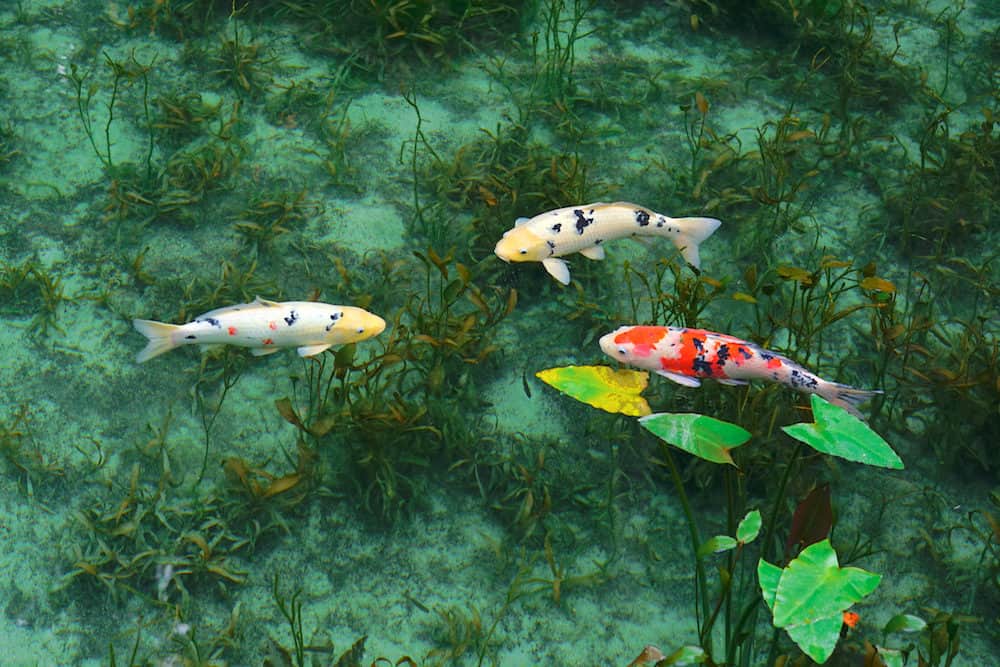
There are several chemical treatments you can use for addressing your string algae problem. Remember, always carefully read the instructions that come on the product packaging before using any chemical in your koi pond. The chemicals used for killing string algae are called algaecides.
There are three main kinds of algaecide: simazine-based, copper-based, and potassium permanganate-based.
While many pond-owners use a simazine-based algaecide, be aware that it will interfere with the photosynthesis of all the aquatic plants in your backyard pond. This is because it uses photosynthesis disruption to kill the string algae.
Copper-based algaecides generally use chelated copper, as it’s longer-lasting than other kinds of copper. When you use a copper-based algaecide, the copper kills the algae by stopping the proper functioning of the algae’s cell metabolism.
If you decide to use copper-based algaecide, be aware that it may adversely impact certain kinds of plants you keep in your pond. If you have any plants that get their nutrition from the pond water, copper-based algaecide may hurt them. Do you have any snails or other invertebrates in your pond? If so, be aware copper-based algaecide may kill them.
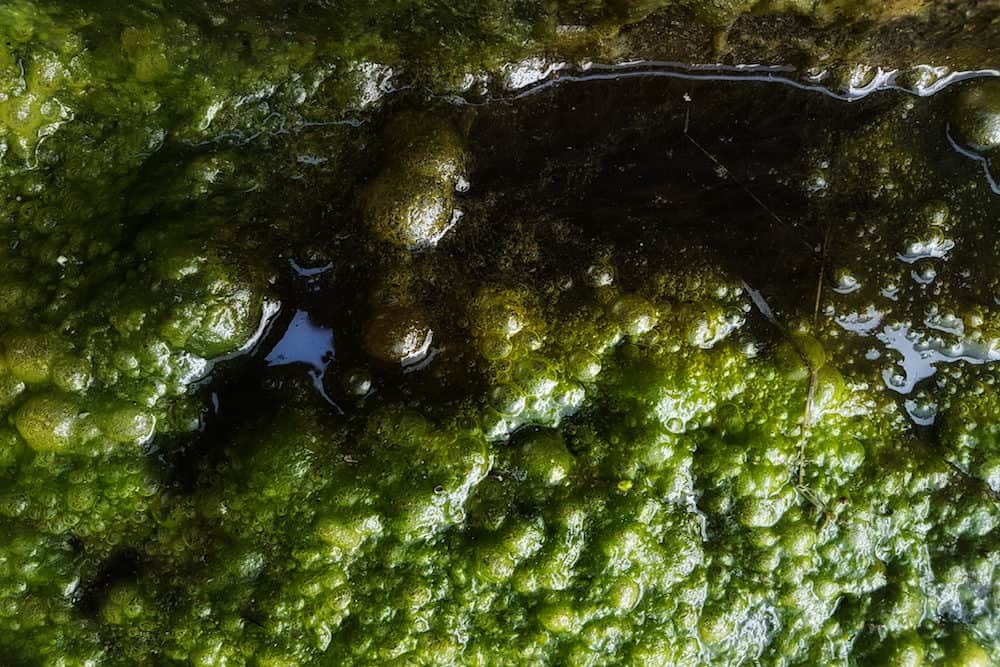
Don’t use a potassium permanganate-based algaecide unless you feel you have to and you’re aware of all the potential effects. Fish will probably have trouble breathing. That is why they’ll probably rise to the water’s surface. Do extra aeration in your pond to bring more oxygen in to help your fish.
Be careful and add only a tiny amount to your pond. In fact, it should be only approximately one teaspoon for every 1000 gallons of water in your pond.
Again, it’s best to avoid potassium permanganate-based algaecide if you have fish.
Don’t assume the job is done when you’ve removed the string algae currently in your koi pond. Take out any and all string algae from your pond as soon as you see it. Also, take measures early in the year to prevent string algae from growing and becoming a problem.
If you don’t take helpful steps, you’ll end up with the same problem again next year. One great way of controlling string algae growth is by putting barley in your pond.
Barley straw is great for preventing new string algae growth. You can use bales of barley or liquid barley. However, if you use bales, you should put the barley in your pond well in advance of the summer. This is because barley bales will take between one month and six weeks before they provide the hydrogen peroxide gas needed to kill the string algae.
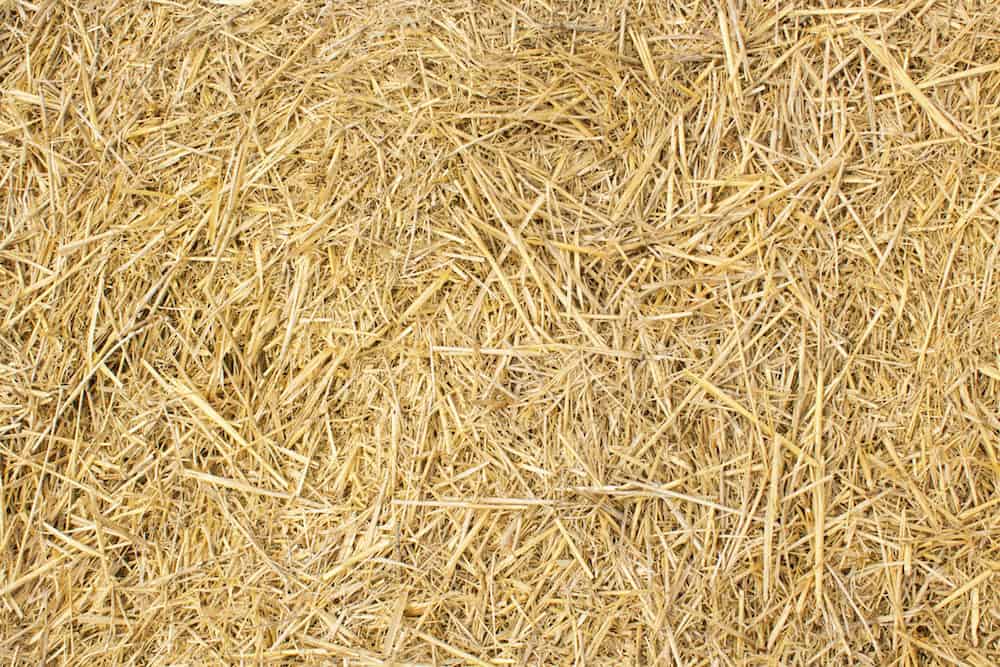
If you need something that will work quickly, try liquid barley. The barley will release its hydrogen peroxide as soon as it goes into the water with liquid barley. Liquid barley is more expensive than bales of barley, however, so keep that in mind.
Make sure to add barley to your koi pond well in advance of the warm weather. In some cases, it may take as long as a month for it to have an effect. If you add barley after the summer has begun and you already have a string algae problem, it may not have as much of an effect as you hope.
Make sure you have an effective and efficient filtration system for your koi pond. If you have an inadequate one, waste products from the pond won’t be removed, and they will fuel any string algae in the water.
Add more aeration to your pond to bring more oxygen to the water and your koi. When you aerate your pond, it brings more dissolved oxygen to the floor area of the pond. This will improve your koi fish’s health as well as promote the proliferation of aerobic bacteria that feeds on dead organic matter.
You can boost the oxygen level in your koi pond by adding beneficial plants. Before you do this, get rid of all decaying pond plant matter. One of the best plants for your pond is Water Lettuce, and this flourishes in the spring and summer months. For a plant that sprouts earlier, consider Marsh Marigold and, of course, don't forego a water lily.

